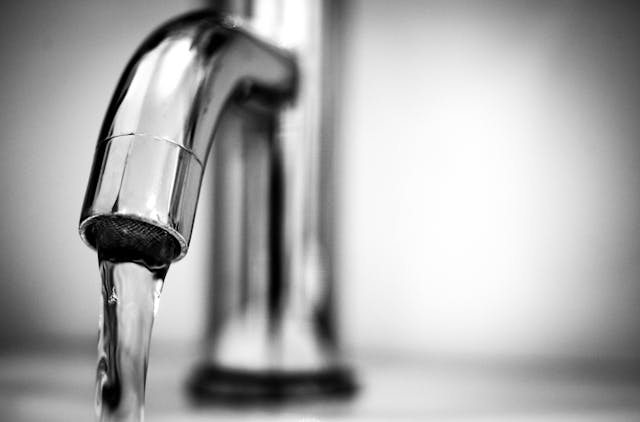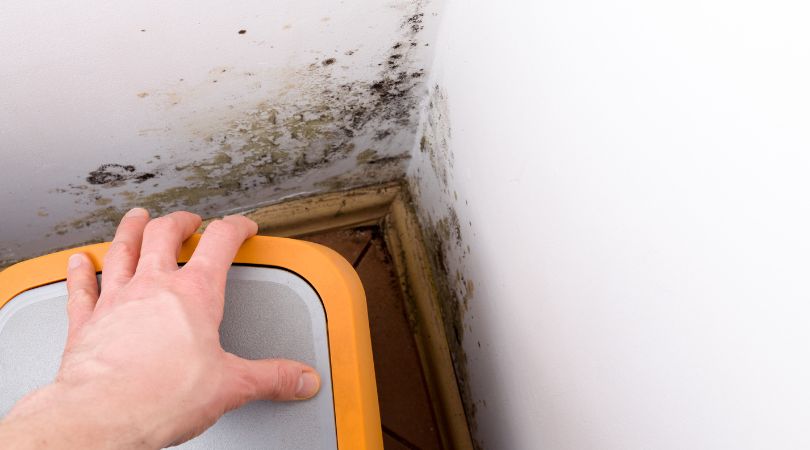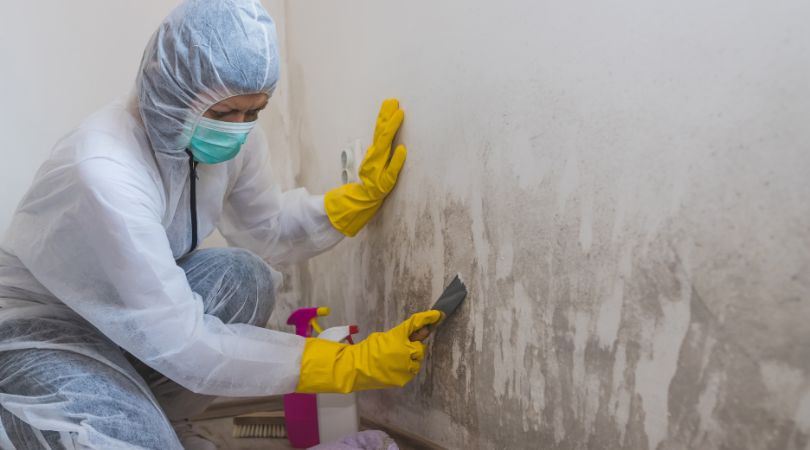5 Signs You Need A Mold Inspection
When mold takes up residence in your Central Florida house, it doesn’t only affect your home’s structure - your health is in danger too.
Mold loves to grow in moist environments. Be it on foods, carpet, paper, or wood. Mold spores are literally everywhere. Controlling moisture is the key to containing their spread and growth.
In small amounts, mold spores are generally harmless. However, when found in large numbers, they can cause a variety of issues. Health issues that range from your health to your home’s structure.
Unfortunately, many Central Florida residents don’t realize they have a mold problem in their home until it’ become noticeable and alarming. So, what are the signs that you have mold in your house?
Sign Of Mold In Your House
Sign 1: Water Damage
As we already mentioned, moisture and mold go hand in hand. Without moisture, mold cannot grow. So, if your home has experienced water damage, you need to act fast.
First things first, find the source of the water damage. If there was a flood, then it may be in your best interest to call a local mold remediation company.
In other cases, however, you may need to do some investigating. If there are water stains on your ceiling or water on the kitchen floor you need to find the cause.
Whatever the cause, acting fast is key. Left unattended, mold can grow and spread quickly. In fact, did you know that mold can start growing as quickly as 24 to 48 hours after water damage?
Sign 2: Leaks
Be aware of any leaks you have in your home. Leaky faucets are annoying, no doubt. However, they have the potential to be much more than just annoying.
Left alone too long, one of the most serious consequences would be mold and mildew growth. Mold can quickly spread from the source of the leak, into the air condition systems and through the whole house.

Common sources of water leaks include:
- Leaking water pipes
- Leaking hot water heater
- Washing machine hoses
- Leaking garbage disposal
- Leaking sink pipes
- Leaking toilet
- Leaking faucet
- Leaking tub or leaking shower
Check these areas of your house frequently. Hopefully, you catch the leak before it creates more damage.
Sign 3: Humidity
Humid climates provide enough moisture for mold to grow. According to the EPA, you should keep indoor relative humidity (RH) below 60%. Plus, low humidity may also discourage pest infestation.
Humidity levels are found to increase due to:
- Combustion appliances such as stoves
- Moisture-generating appliances such as dryers
- Steam radiators
- Humidifiers
One way of preventing high humidity levels is by having proper ventilation installed. You can also:
- Install and run exhaust fans in the bathrooms and kitchens.
- Keep air ducts clean and in good condition and use a dehumidifier.
- Reduce clutter and move furniture away from walls to improve airflow.
- Keep the windows open on sunny days.
Doing these things will help keep moisture levels down and keep the stale air out.
Sign 4: Strange Odor
Have you smelled a musty, moldy odor in your home? If so, it’s a likely sign you have mold in your Central Florida home.
Sure, all homes have their own distinct smells that reflect the composition of the occupants. However, some of the odor in your home can be as a result of environmental factors.
One such factor is the weather. You may begin noticing a strange “musty or moldy smell” after a heavy rain or during seasonal changes. The moldy or musty smell is a sign that something is amiss in your house. Both smells are similar in nature and occur as a result of mold or mildew.
Sign 5: Visible Mold
This is a no-brainer. If you can see mold, then you have a mold problem. Even the tiniest areas of mold can quickly spread to become a source of serious trouble.

Mold comes in all sizes, shapes, and range of colors. From blue to white, black to orange, and yellow to green. Additionally, molds have distinctive texture and profiles. If you do see mold in your home, call an expert to test for mold.
Mold Warning Signs: Allergies And Other Health Issues
Another reason to get your Central Florida house tested for mold is if you or your family member start experiencing certain health issues. Symptoms of mold exposure in your house include:
- Sneezing/sneezing fits
- Throat irritation
- Cough
- Respiratory problems, such as chest tightness, difficulty breathing, wheezing
- Nasal and sinus congestion, runny nose
Are All Molds Dangerous?
Did you know that there are well over 100,000 species of mold? Surprisingly, not all of these species are dangerous. In fact, you might have consumed blue cheese or penicillin, both of which contain molds. Types of mold that should concern you and your family include:
- Basidiospores
- Ascospores
- Cladosporium
- Aureobasidium
- Fusarium
- Ucladium
- Bipolaris
- Chaetomium
- Trichoderma
- Geotrichum
- Alternaria
- Penicillum
- Aspergillus
- Memnoniella
- Stachybotrys
As you can see, there are several common mold types. Some are tricky to detect and others are difficult to clean. The safest and most efficient way of dealing with mold is by having a mold expert visit your home to carry out a mold inspection.

What You Can Do To Reduce Mold In Your Home
There are certain things you can do to help minimize the effects of mold in your home. They include:
- Cleaning up visible mold
- Using a vacuum cleaner with a high-quality filter
- Avoiding conditions that promote the growth of mold by making sure areas like the bathroom and kitchen are dry
- Venting clothes dryers to the outside
- Using exhaust fans or opening windows in the kitchen and bathroom when bathing, cooking, or using the dishwasher
- Fixing leaky plumbing and other building faults
Bottom Line
If you suspect you have mold in your Central Florida home, contact a professional mold inspector immediately. Remember, left unattended, mold can grow to alarming levels. This can decrease your home’s air quality and lead to a myriad of health problems.
A mold inspector will come in and perform an air quality test or collect a surface sample in your home. They look for signs of mold contamination, and identify the root of the problem.


